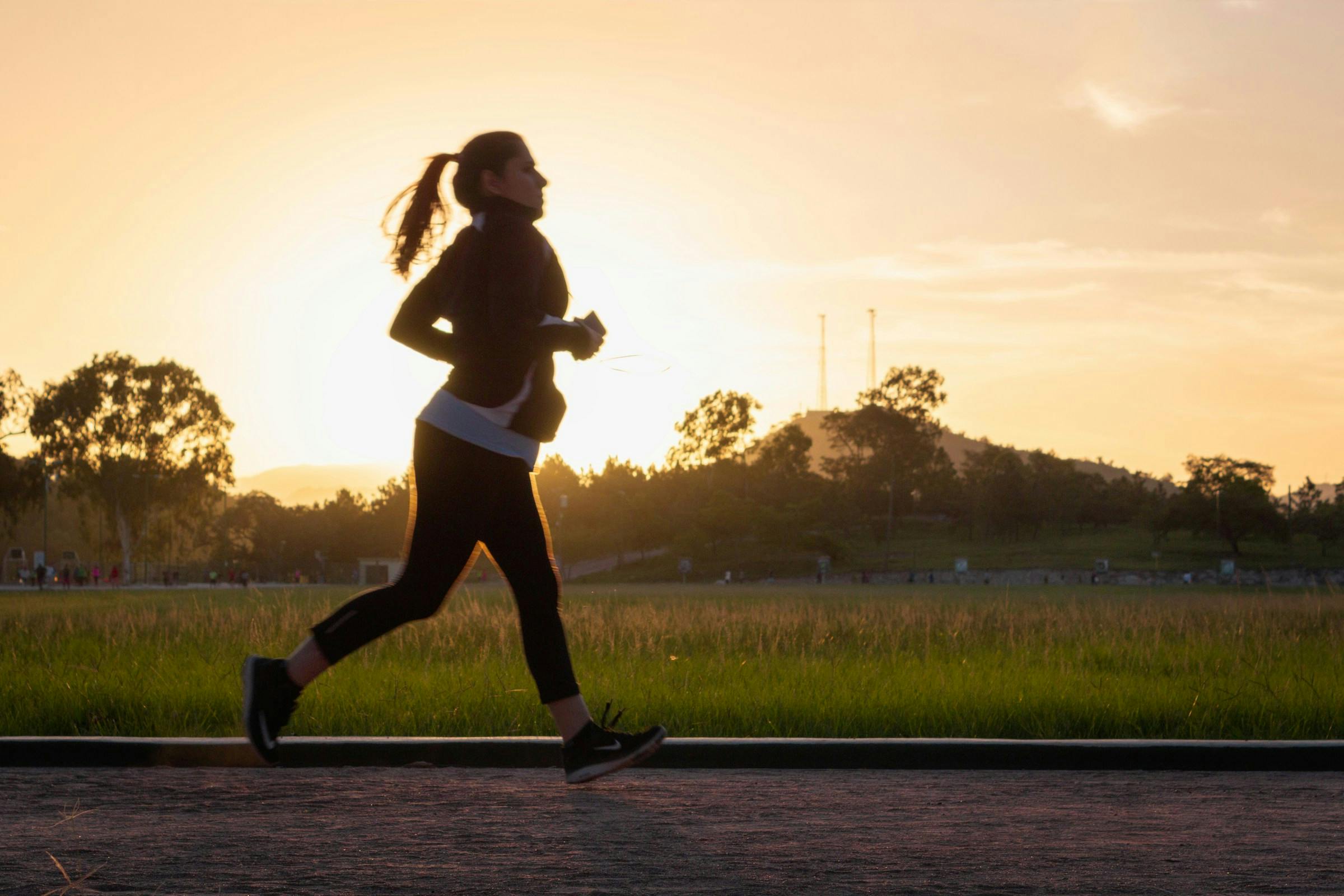Weight Loss for Beginners: The Ultimate Step-by-Step Guide to Lasting Results
By Karyn O.
Reviewed by Kenya Bass, PA-C
Published Jul 18, 2025
14 min read

If you're new to weight loss and unsure where to start, you're not alone. Trying to shed extra pounds can feel confusing, frustrating, and even intimidating, especially with so many conflicting opinions out there. From fad diets to extreme workouts to miracle supplements, it’s easy to get lost.
But here’s the good news: weight loss doesn’t have to be complicated. It doesn’t require perfection, starvation, or endless hours at the gym. In fact, the best weight loss approach is the one that fits your life—slow, steady, and sustainable.
In this beginner-friendly guide, we’ll walk you through everything you need to know to lose weight the healthy way and keep it off. Backed by science and simplified for real life, this isn’t just about reaching a number on the scale—it’s about feeling stronger, more energized, and more in control of your health.
Let’s get started.
What Really Causes Weight Gain? (And Why It’s Not Just About Calories)
For years, most people have been taught a simple formula: eat fewer calories than you burn, and you’ll lose weight. While this model has some truth to it, it leaves out important details, like how your body handles those calories and what affects your hunger, cravings, and metabolism.
Weight gain happens when your body stores more energy (usually as fat) than it uses. But it’s not always because you’re lazy or eating too much. There are several other key players involved:
Your hormones—like insulin, leptin, ghrelin, and cortisol—play a big role in how hungry you feel, how full you get, and where you store fat. For example, if your insulin levels stay high (often due to high-carb, high-sugar foods), your body is more likely to store fat and less likely to burn it. If ghrelin (the hunger hormone) is constantly elevated due to poor sleep or stress, you might feel hungry even when your body has enough fuel.
Stress also plays a part. Chronic stress increases cortisol, a hormone that encourages fat storage, especially around your belly. On top of that, many people eat more or make poor food choices when they’re overwhelmed, tired, or emotionally drained.
And then there’s your lifestyle. Sitting all day, not getting enough sleep, relying on fast food, and skipping meals can all disrupt your metabolism and lead to gradual weight gain over time.
So yes, calories matter—but they’re just one piece of a much bigger picture.
How Weight Loss Works (The Science, Simplified)
Let’s break it down simply: to lose fat, your body needs to use more energy than it stores. This usually means creating a small, consistent calorie deficit—either by eating a little less, moving a little more, or both.
When that happens, your body starts tapping into its stored energy—your fat cells—to make up the difference. Over time, this leads to fat loss.
Now, here’s what most people don’t realize: fat loss and weight loss aren’t always the same thing. The scale might go down, but that doesn’t always mean you’re losing fat. You could be losing water weight, muscle mass, or glycogen (your body’s stored form of carbs).
That’s why sustainable weight loss tends to be gradual—about 0.5 to 1 kilogram (1 to 2 pounds) per week is realistic for most people. Faster weight loss usually comes from water or muscle, not fat.
Your metabolism—how your body burns energy—is also important. Some of it is based on your genes, but a lot is within your control. When you eat whole foods, build muscle through movement, and get good sleep, you support a faster, healthier metabolism that makes weight loss easier and more maintainable.
Step 1: Know Your “Why” and Set Realistic Goals
Before you start counting calories or hitting the gym, take a moment to ask yourself: Why do I want to lose weight? Maybe it’s to feel better in your body, have more energy for your kids, reduce your risk of disease, or simply feel more confident in your clothes.
Knowing your “why” gives you a deeper motivation that lasts longer than quick fixes or social pressure. And that matters—because weight loss isn’t always fast or easy.
Next, set goals that are realistic and measurable. Instead of saying “I want to lose weight,” try “I want to lose 5 kg over the next 3 months by walking daily and cooking at home more often.”
Short-term goals help you stay focused, while long-term goals keep you moving forward. And remember, progress isn’t always linear. Life happens. The key is consistency, not perfection.
Step 2: Build a Foundation with Nutrition (No Crash Diets)
Forget extreme diets that cut out entire food groups or leave you constantly hungry. The best diet for weight loss is one you can actually stick with—and that means it should nourish your body, satisfy your hunger, and support your lifestyle.
Start by eating mostly whole, minimally processed foods. That includes:
- Lean proteins like chicken, fish, eggs, tofu, and legumes
- High-fiber carbs like vegetables, fruits, oats, brown rice, and sweet potatoes
- Healthy fats like avocado, olive oil, nuts, and seeds
These foods help regulate your blood sugar, which keeps your energy steady and your cravings in check. When your blood sugar stays stable, you’re less likely to overeat or snack mindlessly.
Eat slowly and mindfully. Pay attention to when you’re full. Try not to eat in front of screens or on the go. And don’t skip meals—this often leads to overeating later in the day.
Above all, avoid crash diets that promise rapid results. They usually cause water and muscle loss, mess with your metabolism, and lead to rebound weight gain once you stop.
Step 3: Move More—Even If It’s Just Walking

You don’t need an intense workout plan to start losing weight. In fact, one of the best things you can do is simply walk more.
Walking is easy, free, and surprisingly effective. Just 30 minutes a day can improve your mood, lower blood sugar, support fat burning, and help regulate your appetite.
As you feel more comfortable, you can add other forms of movement, like strength training, yoga, swimming, or biking. Building muscle helps increase your resting metabolism, so you burn more calories even at rest.
The goal isn’t to punish your body with long, grueling workouts. It’s to find ways to move that you actually enjoy and can do consistently. Some days, that might be a gym session. Other days, it might be dancing in your living room or doing some light stretching.
Start where you are. Any movement is better than none.
Step 4: Prioritize Sleep and Manage Stress
Most people underestimate how important sleep and stress are when it comes to weight loss. But the truth is, they can make or break your progress.
When you don’t sleep enough, your body produces more ghrelin (the hunger hormone) and less leptin (the fullness hormone). This makes you hungrier, increases cravings, and makes it harder to say no to snacks and sugar.
Poor sleep also affects how your body processes carbs, slows your metabolism, and increases cortisol, the stress hormone that can promote fat storage, especially around your belly.
Chronic stress has a similar effect. It keeps cortisol levels high, disrupts digestion, and makes emotional eating more likely.
To support your weight loss journey, aim for 7 to 9 hours of sleep each night. Try creating a wind-down routine—turn off screens, dim the lights, and give yourself 30 minutes to relax before bed.
For stress, even small habits can help: deep breathing, short walks, journaling, or talking to a friend. Managing stress isn’t just about mental health—it’s essential for physical health too.
Step 5: Track Progress Without Obsessing Over the Scale
The scale is just one way to measure progress—and often, not the best one. Your weight can fluctuate daily due to water, hormones, food intake, and more. So if the number doesn’t move, it doesn’t mean you’re failing.
Instead of weighing yourself daily, try once a week (or even less). And consider other signs of progress, like:
- How your clothes fit
- Your energy levels
- Your strength or endurance
- Changes in body measurements or photos
Some people also find it helpful to track what they eat, either through journaling or using an app. This isn’t about perfection or obsession—it’s about building awareness. You might discover patterns, like skipping meals that lead to late-night snacking, or not eating enough protein during the day.
Remember, the goal is to learn what works for your body, not to be perfect every day.
Step 6: Build Sustainable Habits (Not Quick Fixes)
Lasting weight loss is the result of long-term habits, not short-term tricks. So don’t worry about being perfect—focus on being consistent.
Maybe that means prepping meals once a week, walking after dinner, choosing water over soda, or learning how to cook one healthy dish you really enjoy. Small actions, repeated daily, are what drive real change.
Use the 80/20 rule: eat well and move your body most of the time, and allow yourself treats or flexibility without guilt. This balance helps prevent burnout and keeps life enjoyable.
And if you “fall off track”? Don’t wait for Monday. Get right back into your routine with your next meal or next workout. The most successful people aren’t perfect—they just keep going.
Common Mistakes Beginners Make (And How to Avoid Them)
It’s easy to fall into common traps when you’re new to weight loss. But knowing what to expect can help you avoid frustration and setbacks.
One of the biggest mistakes is trying to change everything at once—cutting out sugar, hitting the gym daily, tracking every calorie. This can lead to burnout fast. Start small. One or two changes at a time is plenty.
Another mistake is skipping meals or eating too little. This slows your metabolism, increases cravings, and often leads to bingeing later. Your body needs fuel to function.
Don’t compare your journey to others. Everyone loses weight at a different pace, and what works for someone else might not work for you.
And finally, don’t give up too soon. Real, lasting results take time. You may not see visible changes right away, but your body is adjusting under the surface. Keep going.
What to Eat for Weight Loss: Simple Beginner Meal Ideas
Eating for weight loss doesn’t mean eating boring or bland food. In fact, meals can be both satisfying and supportive of your goals.

A simple way to build a balanced plate is to include a lean protein source, a fiber-rich carb, some healthy fat, and plenty of non-starchy vegetables. For example:
- Grilled chicken with quinoa, roasted vegetables, and olive oil
- Stir-fried tofu with brown rice and broccoli
- Scrambled eggs with spinach and a slice of whole grain toast
- Greek yogurt with berries, flaxseed, and almond butter
Don’t forget to hydrate. Sometimes what feels like hunger is actually thirst. Water also supports digestion, metabolism, and energy.
Snacks are fine, too—just aim for ones that contain protein or fiber to help you stay full. Think apple slices with peanut butter, hummus and carrots, or boiled eggs with a few almonds.
RELATED READ: How Many Calories Does Weightlifting Burn? Real Numbers Explained
Do You Need Supplements or Weight Loss Aids?
If your diet is balanced, you may not need supplements. But some people benefit from basics like:
- A multivitamin (especially if your intake of fruits and vegetables is low)
- Protein powder (to help hit your daily protein needs)
- Fiber supplements (if digestion is sluggish)
- Omega-3s (if you don’t eat much fatty fish)
As for weight loss pills or fat burners, most aren’t worth your time or money, and some can be harmful. Focus on food first.
Prescription medications like GLP-1 receptor agonists (e.g., Ozempic or Wegovy) can help in some cases, especially for people with obesity or metabolic issues, but they should always be used under medical supervision and combined with lifestyle changes.
When to See a Professional
If you’ve been trying to lose weight and aren’t seeing progress, or if you feel overwhelmed, you’re not alone—and it’s okay to ask for help.
A doctor or dietitian can help rule out underlying issues like thyroid problems, PCOS, insulin resistance, or hormonal imbalances. They can also help you set up a plan that works for your unique needs.
If you’ve struggled with disordered eating in the past or feel like food is controlling your life, working with a therapist or nutrition expert can also make a big difference.
You don’t have to figure it all out on your own.
Final Thoughts: Your Journey Starts Now
Weight loss is a journey, not a race. There will be ups and downs, good days and hard days. But every small step counts.
Start with the basics: eat real food, move your body, get good sleep, and be kind to yourself. You don’t need to be perfect—just consistent. With time, patience, and self-compassion, you can reach your goals and build a life that supports your healthiest, happiest self.
You’ve got this.
Frequently Asked Questions (FAQs)
1. How much weight can I realistically lose in a month as a beginner?
For most beginners, a realistic and healthy weight loss rate is 0.5 to 1 kilogram (1 to 2 pounds) per week. That means you can expect to lose around 2 to 4 kilograms (4 to 8 pounds) in a month if you're consistent with healthy habits like eating better, moving more, and managing stress. Going faster than this usually leads to water or muscle loss rather than fat.
2. Do I need to count calories to lose weight?
Not necessarily. While calorie awareness can be helpful, many beginners find better success by focusing on eating whole foods, controlling portions, and listening to hunger cues. If you prefer structure, tracking calories can work—but it’s not the only path to weight loss. Focus on quality over quantity.
3. Is it possible to lose weight without exercising?
Yes, it is possible to lose weight through diet alone, but adding movement makes it much easier and healthier. Exercise helps preserve muscle mass, boosts mood, supports metabolism, and improves long-term success. Even walking daily can make a big difference.
4. What should I do when my weight loss stalls?
Weight loss plateaus are normal. Your body adjusts as it loses fat, which can temporarily slow progress. When this happens:
- Reassess your food portions and choices
- Increase daily movement or add strength training
- Prioritize sleep and stress management
- Be patient—sometimes your body just needs time
Plateaus are not failure; they’re a natural part of the journey.
5. What’s the best diet for beginners who want to lose weight?
There’s no single “best” diet. The most effective diet is one you can stick with long term. A good beginner diet is balanced, flexible, and includes:
- Lean proteins
- High-fiber carbs (like vegetables and whole grains)
- Healthy fats (like nuts, seeds, and olive oil)
Popular beginner-friendly approaches include the Mediterranean diet, plate method, or a lower-sugar, whole food diet.
6. Should I avoid carbs if I want to lose weight?
You don’t have to. Carbohydrates are your body’s main source of energy, especially for your brain and muscles. What matters is the type and amount of carbs. Choose fiber-rich carbs like oats, fruits, legumes, and sweet potatoes instead of sugary snacks or refined grains.
7. How soon will I start seeing results?
Some people notice changes—like more energy, better sleep, or less bloating—within the first week or two. Visible changes on the scale or in clothes may take 3 to 6 weeks, depending on your starting point and consistency. Be patient. Progress is happening even if the scale isn’t moving yet.
8. Is it okay to have cheat meals or snacks?
Yes! In fact, allowing occasional treats helps many people stay on track long term. The key is balance, not perfection. Try the 80/20 rule: eat healthy 80% of the time, and give yourself room to enjoy life the other 20%—without guilt.
9. Can drinking water really help me lose weight?
Absolutely. Drinking enough water can:
- Help control hunger (sometimes thirst feels like hunger)
- Support digestion and metabolism
- Replace sugary drinks with zero-calorie hydration
Aim for around 2 to 3 liters (8–12 cups) per day, more if you’re active or in hot weather.
10. When should I weigh myself?
If you choose to use the scale, weigh yourself:
- At the same time of day (ideally first thing in the morning)
- In the same clothing (or none)
- On the same day(s) each week
Daily fluctuations are normal. Weekly trends matter more. You can also track progress by how your clothes fit or how you feel.
Share this article

Magnesium for Weight Loss: Benefits, Risks, and What Science Really Says
Dr. Jossy Onwude, MD
Sep 29, 20259 min read

Mounjaro® Sulfur Burps Explained: Causes, Symptoms, and Science-Backed Remedies
Dr. Priyali Singh, MD
Sep 25, 202511 min read

Low Sodium Diet: Simple Guidelines, Food Lists, and Tips for Better Health
Lilian E.
Sep 30, 202512 min read

Best-in-class care is a click away
Find everything and everyone you need to reach your metabolic health goals, in one place. It all makes sense with Meto.
Join Meto